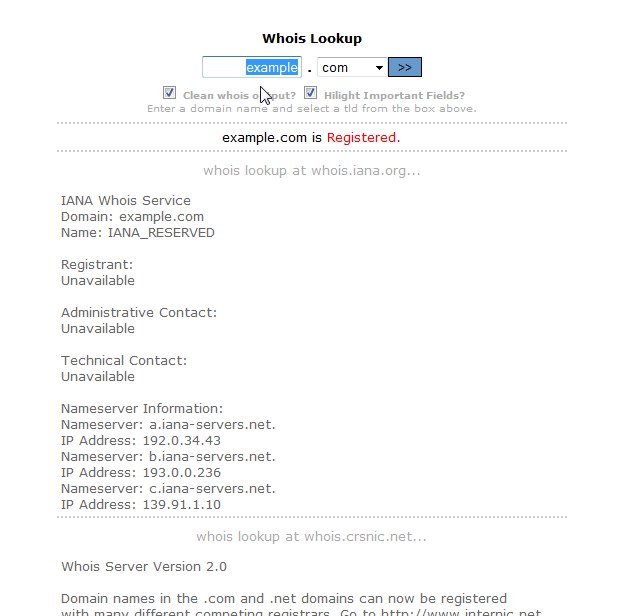WARNING – This project has not been updated since around 2008 or 2009, and is not supported.
It’s just here in case it is still of use to anyone.
Sam’s Whois is a free php class with supporting scripts which make adding a domain name whois lookup to your website incredibly simple. The scripts were written by me, Sam, hence the name. Imaginative, huh?
Update March 16th 2009: Now supports a much larger list of tlds.
Main Features
- All major tlds supported (including com, net, org, info, biz, us, co.uk, org.uk, etc).
- Optionally automatically redirect a query to the authoritative whois server for a tld where appropriate (.com and .net).
- CSS-based design for easy integration with your existing website design.
- Free to use (see the licence page for full details)
- Can cache whois lookup results for a specified amount of time, reducing bandwidth and system usage.
- Optionally require users to enter a randomly generated code, displayed as an image, for each lookup to stop people using scripts to abuse the system.
- Comes with a detailed and heavily commented example script fully illustrating usage.
- Easy installation – Basic version requires only 1 line of code. View the quickstart guide here.
- Optionally clean whois data of extraneous text (for some tlds).
- Easily limit which tlds are supported with one line of code.
- Optionally hilight main fields in the whois data for extra clarity.
See the features page for further information.
Download TODO
The latest version of the script is available as a zip file. It contains the core whois class, an easy to use include file, the example script, and a configuration file containing details of which whois servers to use for each tld.
Documentation:
A quickstart installation guide is included in the download, and is also available to read online. Full instructions on how to configure the various options, as well as detailed information on how to use the samswhois class and the secure code image script, are available on the documentation pages.

very nice.